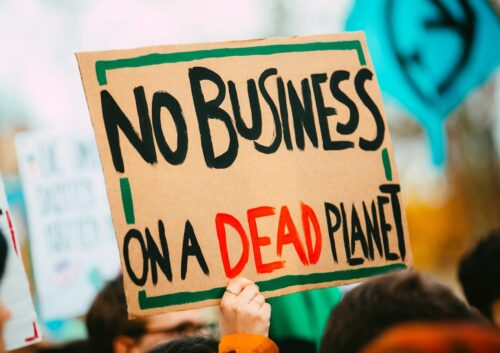
Vowing to keep fighting, the Obama Administration was dealt a devastating blow when the Supreme Court ruled 5-4 yesterday that his signature Clean Power Plan would be ‘put on hold’ as lawsuits move forward. The Clean Power Plan has become an enormous part of Obama’s “climate legacy” and also a way to circumvent both chambers of a Republican-controlled Congress.
The ongoing challenge to the Clean Power Plan will be whether Obama acted within his constitutional powers or if he, and by extension the EPA, bypassed Congress to roll out a bevy of onerous regulations.
It all began when Obama failed to get a climate bill passed in the first two years of his presidency, when he controlled both chambers of Congress.
Not able to write laws himself, he then used the Environmental Protection Agency (EPA) to do what even Democrats refused to do: create and implement a plan to reduce CO2 emissions.
Because of the ruling, the justices (or at least five of them) believe opponents of this plan had made strong arguments against the rules and issued a stay on the plan.
The Clean Power Plan targets CO2 emissions from existing power plants, requiring them to cut them by one-third by 2030. Each state must submit an ‘action’ plan by September on how it will comply with the plan. The EPA’s plan mainly targets coal-fired power plants, and hundreds of them have already been shuttered due to the new regulations.
This isn’t the first time the Supreme Court has sent a sharp rebuke to the EPA. In late June 2015, the Supreme Court told the EPA it had failed to consider the costs of certain regulations, which were doing ‘more harm than good.’
In that 5-4 vote ruling, the Court said the EPA failed to take costs into account when it imposed new regulations curbing the emissions of mercury and other hazardous air pollutants, which forced the closure of hundreds of coal-fired power plants due to costly new standards.
As noted by the energy think-tank Institute for Energy Research, it’s no longer cost-effective to build a new coal-fired plant in the U.S. To replace the plants already closed due to the EPA’s regulations, “new [power plants] will cost the nation and thus taxpayers and consumers billions of dollars.” Meanwhile, both China and India are building new coal-fired power plants at breakneck speed.
Last month, a federal appeals court in Washington, D.C. refused to put the plan on hold or issue a “stay.” The appeals court is “not likely to issue a ruling on the legality of the plan until months after it hears oral arguments begin on June 2.”
There are 27 states, plus numerous industry groups and organizations challenging the legality of the plan. The Supreme Court’s temporary ‘stay’ prevents the EPA from implementing the Clean Power Plan, at least until the lawsuit makes its way up the legal food chain.
With control of both chambers of Congress, Democrats refused to take up the climate issue in the first two years of Obama’s presidency, having just won a bitter battle over Obamacare. Democrats lost control of the House in 2010 in what the president termed an “electoral shellacking,” but Obama was already figuring out ways to get around Congress.
Enter the Clean Power Plan, a Gordian knot of rules and regulations that targets CO2 emissions and is enforced by the EPA.
Only Congress has the power to write new laws, but the EPA can write new regulations. Under the auspices of cleaner air, the EPA rolled out the Clean Power Plan, specifically targeting coal-fired power plants’ CO2 emissions. Critics say that Obama’s inability to work with Congress, even when he controlled both chambers, plays an enormous role in his “shift to regulations.”
While the number of executive actions is on par with former presidents, the scope of those actions is much larger, sweeping, and, if the Supreme Court’s recent ruling is a bellwether of things to come, unconstitutional.
Sen. James Inhofe (R) said, “The only way he was going to be able to fulfill this [climate] legacy was through regulation.” Most of the Republicans running for president have vowed to repeal Obama’s Clean Power Plan, as the costs don’t outweigh the damage it would do to the economy.
Even the EPA has admitted it would only avert warming 0.01 degrees Celsius by the year 2100. The regulations would also raise energy prices on oil, natural gas while favoring government-subsidized renewables, which can’t compete with cheap, abundant fossil fuels.
Gina McCarthy told The Hill that she thinks Obama was “frustrated in the first term. I think he went into the second term determined not to be frustrated,” she added. “He was determined to look at what tools and authorities Congress gave us that we could now use to move forward. … That’s where we focused our entire effort.”
Read rest at Examiner [Archived]


















